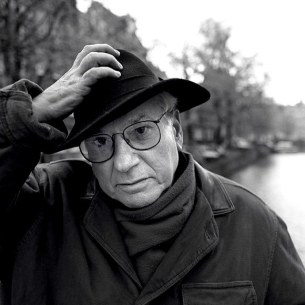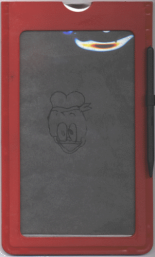Only a week ago, in Berlin, Germany, the memory of those devastated by the gruesome and calculated extermination carried out by the Germany of National-Socialism has been commemorated. As in every international Holocaust remembrance day, I come to ponder the memory we are commemorating. For most of us have not witnessed, nor survived, nor fought against, nor died while fighting, these forces. We are witnesses of these memories only in their re-writing, in their annual repetition. I also ask myself if these memories can retain their importance for the ones who are only the descendants of the humanity of that era? If in our commemoration, we are not only able to sketch the contours of what can never be truly recollected again?
In his book, Tashach (1948), gifted writer and holocaust surviver, Yoram Kaniuk, provides us with a definite answer. He argues that even he himself, a surviver, a fighting partisan, does not remember the “horrible pain” but only “remembers that he has pained”.

The Wunderblock:
In his attempt to describe the mechanism of memory, Freud uses the metaphor of the Wunderblock. The Wunderblock (known in the 1980’s, in its developed version, as the “Etch A Sketch”) is an old children’s game composed of a board made of wax and a cellophane screen. The child draws on the screen with a plastic pencil leaving marks on the wax board. The Wunderblock is so “Wunder-ful” because it enables the child to pull off the screen from the wax board and make the drawing disappear. Nevertheless, when describing the Wunderblock, Freud insists that the drawings on the wax board is never fully erased, but carries a “remainder” which is indefinitely carved on the board. Freud argues that the mechanism of memory functions in the same way. The child’s etching on the cellophane screen akin to the conscious experience – constantly processing sensual stimuli. The wax board akin to the unconscious, the place where these experiences are copied and indefinitely preserved.

(Photo by MeGo aka Melissa Gould)
While Freud’s Wunderblock metaphor seems to be quite relevant for the description of the mechanism of memory in simple organisms, and even more developed animals, Lacan argues that it is not sufficient for the description of the memory of human beings (speaking-beings). For example, it is quite evident that my cat still acts in accordance to an exact copy of her experience of “horrible pain”. She was adopted after going through the hardships of the life on the street, and thus usually reacts with an immediate attack/flight whenever she experiences the tiniest of unidentified noises or movements in her surrounding. Every time she does so, it seems she is experiencing (in a concrete and unmediated way) that “horrible pain” at the root of her traumatic past. Nevertheless, when we talk about humans, memories do not function in the same exact way. That is because for us memory is not a mater of imprinting but of converting – the conversion into a signifier. Or in other words, the conversion of the “horrible pain” to the signifier that has “pained”.
What Keeps on Not Being Written:
For each one of us, the “horrible pain” at the root of our traumatic past can only be considered in terms of an object already lost. A Thing of the real, which was not directly inscribed in the unconscious, but converted to a signifier and only then retroactively inscribed. Accordingly, when Yoram Kaniuk argues that he “remembers that he has pained”, he represents that “horrible pain” with a signifier – he instates a signifier in the place of the real Thing. A Thing which was lost, which could have never been directly inscribed, but is only inscribed through its conversion.
Therefore, the memory of the holocaust can never be the memory of the Thing itself, but only its conversion to a signifier. For us, those who did not directly experience the “horrible pain”, it is a conversion of a conversion – an inscription of an inscription. A two-fold process, which is sometimes at the risk of losing its touch with the original traumatic core. That is why the commemoration taking place in the international Holocaust remembrance day is so crucial. It represents our collective insistence to inscribe that un-inscribable trauma, to find it a place in between the signifiers – in between ourselves. This is the only way the collective traumatic experience can find its place in the course of history. Through this paradoxical attempt. For the real can be made present, only in its absence, when it is eclipsed by the signifier.

As usual I enjoyed reading your post. I have one question regarding the Lacanian interpretation of the so called “Magic Board” metaphor. If memory doesn’t work in the way Freud described it using that metaphor, how can we explain Post-trumatic experiences without falling again to a qulative difference between the abnormal and the normal?
LikeLike
Dear Lior, thank you for your comment. We can approach post-trauma from the scope of the conversion of the traumatic kernel. We could thus define it in terms of anxiety, and the lack of symbolic mediation. We could also define it in terms of the disavowal of conscious stimuli, in the place of its repression. In other words, post-trauma would be defined as a mnemonic phenomenon in as much as it entails an alteration in the conversion of a “real pain” to a “signifier that pains”.
LikeLike